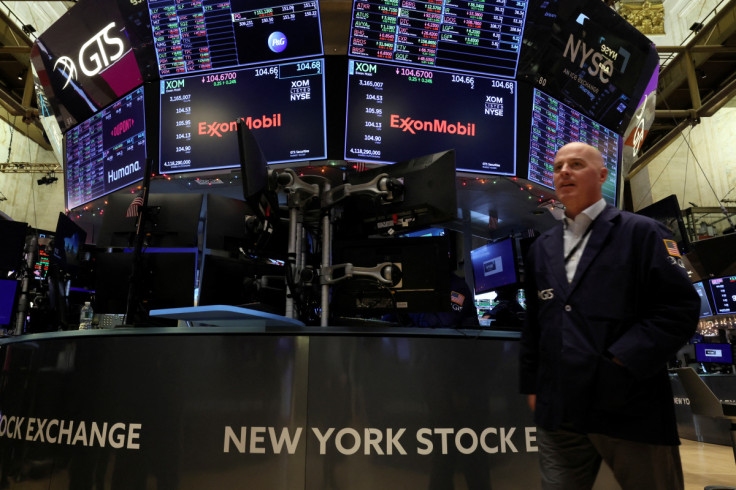Wall Street Gains After Inflation Data, Energy Outperforms

The S&P 500 and the Dow were gaining ground on Friday and Nasdaq was barely red as investors assessed inflation data against rate hike and recession fears while energy shares jumped on higher oil prices.
A Commerce Department report showed U.S. consumer spending barely rose in November, while inflation cooled further, but not enough to discourage the U.S. Federal Reserve from driving interest rates to higher levels next year.
The personal consumption expenditures (PCE) price index, the Fed's preferred inflation gauge, rose 0.1% last month after climbing 0.4% in October.
A benchmark survey showed U.S. consumers expect price pressures to moderate notably in the next year, with the one-year inflation outlook dropping to the lowest in 18 months in December.
"We've mixed data coming in. It's sloppy and choppy. The consumer is hanging in there. The jobs are there. Nominal wage growth is there. Consumer confidence has picked up a little bit and inflation in general is rolling over," said Joe Quinlan Head of CIO Market Strategy at Merrill and Bank of America Private Bank.
But he noted that "the big cloud on the horizon is the Fed being hawkish about the 2% inflation target."
"Today is more of a muted response to good data but still it's not all clear, mission accomplished," he said, also adding that analyst earnings estimates for 2023 will likely have to come down.
By 2:27PM ET, the Dow Jones Industrial Average rose 97.17 points, or 0.29%, to 33,124.66, the S&P 500 gained 11.73 points, or 0.31%, to 3,834.12 and the Nasdaq Composite dropped 6.00 points, or 0.06%, to 10,470.12.
Investors have been jittery since last week as the Fed remains stubbornly committed to achieving the 2% inflation goal and projected it would continue raising rates to above 5% in 2023, a level not seen since 2007.
Energy shares stood out as the biggest gainers, last up 2.7% as oil prices gained following news of Moscow's plans to cut crude output. Technology was the biggest decliner among the S&P's major sectors with a 0.23% decline, followed by healthcare, down 0.2%.
Wall Street indexes had sold off sharply on Thursday after data indicated a resilient American economy, fueling worries that the central bank could keep hiking rates for longer.
The S&P 500 is on track for its biggest yearly decline since the 2008 financial crisis, last down 19.6% year-to-date. The Nasdaq has shed over 33% this year and the Dow Jones Industrial Average is off almost 9%.
Tesla Inc's shares, last down 1%, had touched a more than two-year low in volatile trading as boss Elon Musk's promise to not sell his shares for at least two years did little to reassure investors.
Dow Jones parent News Corp gained 2.3% after a report that billionaire businessman Michael Bloomberg was interested in acquiring either Dow Jones or the Washington Post.
Advancing issues outnumbered declining ones on the NYSE by a 1.69-to-1 ratio; on Nasdaq, a 1.05-to-1 ratio favored decliners.
The S&P 500 posted 2 new 52-week highs and 1 new lows; the Nasdaq Composite recorded 37 new highs and 189 new lows.
© Copyright Thomson Reuters {{Year}}. All rights reserved.





















